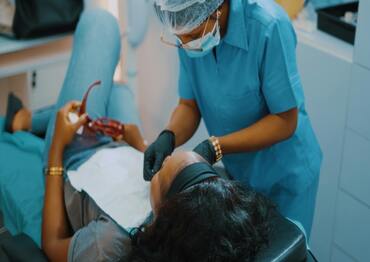Oral cancer, also known as mouth cancer, is a serious health condition that affects various parts of the mouth, including the lips, gums, tongue, the inside of the cheeks, and the roof or floor of the mouth. Despite advancements in medical research and treatment, oral cancer remains a significant concern, particularly because it often goes undetected until it is in a more advanced stage. This blog aims to provide a comprehensive overview of oral cancer, including its types, risk factors, symptoms, diagnosis, treatment options, and preventive measures.
What is Oral Cancer?
Oral cancer refers to malignancies that occur in any part of the oral cavity. It can involve the lips, gums, tongue, cheeks, palate, and floor of the mouth. Oral cancer is a subset of head and neck cancers, and early detection is critical for successful treatment.
Types of Oral Cancer
Oral cancer encompasses several types, including:
- Squamous Cell Carcinoma (SCC): The most common type, originating in the squamous cells lining the oral cavity.
- Salivary Gland Cancer: Cancer that begins in the salivary glands, which produce saliva.
- Lymphoma: A type of cancer that starts in the lymphatic system, which can also affect the oral cavity.
- Melanoma: A rare type of oral cancer that begins in the pigment-producing cells of the mouth.
Risk Factors
Certain factors can increase the likelihood of developing oral cancer:
- Tobacco Use: Smoking or using smokeless tobacco products significantly raises the risk.
- Excessive Alcohol Consumption: Regular and heavy drinking can contribute to oral cancer risk.
- Human Papillomavirus (HPV) Infection: Certain strains of HPV are linked to oral cancers, particularly in younger individuals.
- Poor Oral Hygiene: Chronic irritation from ill-fitting dentures or poor oral hygiene can increase risk.
- Sun Exposure: Excessive exposure to ultraviolet (UV) radiation can lead to lip cancer.
- Diet: A diet low in fruits and vegetables may be associated with an increased risk.
- Family History: A family history of oral cancer or genetic conditions can increase risk.
Symptoms
Oral cancer symptoms can vary and may be subtle in the early stages. Common signs to watch for include:
- Persistent Sores: Sores or ulcers in the mouth that do not heal within a few weeks.
- Lumps or Bumps: Unusual lumps or swelling in the mouth, gums, or lips.
- Pain or Tenderness: Persistent pain or tenderness in the mouth or ear.
- Red or White Patches: Abnormal red or white patches on the gums, tongue, or the inside of the cheeks.
- Difficulty Swallowing: Pain or difficulty when swallowing or chewing.
- Bleeding: Unexplained bleeding in the mouth or throat.
- Numbness: Loss of sensation or numbness in the tongue or other areas of the mouth.
Diagnosis
Early diagnosis of oral cancer is crucial for effective treatment. Diagnostic procedures include:
- Oral Examination: A thorough examination by a dentist or oral surgeon to check for signs of cancer.
- Biopsy: Removing a small tissue sample from a suspicious area for laboratory analysis.
- Imaging Tests: Techniques like CT scans, MRI, and PET scans help assess the extent and spread of the cancer.
- Endoscopy: A procedure using a flexible tube with a camera to examine the mouth and throat more closely.
Treatment Options
Treatment for oral cancer depends on its stage, location, and overall health of the patient. Common treatments include:
- Surgery: Often the primary treatment, involving the removal of the cancerous tissue or affected areas of the mouth.
- Radiation Therapy: Uses high-energy rays to target and destroy cancer cells, often used after surgery.
- Chemotherapy: Involves the use of drugs to kill cancer cells or stop their growth, especially if the cancer has spread.
- Targeted Therapy: Focuses on specific molecules involved in cancer growth and may be used in combination with other treatments.
- Immunotherapy: Helps the immune system recognize and fight cancer cells, though it’s more commonly used for advanced cases.
Preventive Measures
Taking steps to reduce the risk of oral cancer can be beneficial:
- Avoid Tobacco Products: Refrain from smoking or using smokeless tobacco.
- Limit Alcohol Intake: Drink alcohol in moderation or avoid it altogether.
- HPV Vaccination: Vaccination against high-risk HPV strains can help reduce the risk of oral cancers associated with HPV.
- Regular Dental Check-Ups: Routine visits to the dentist can aid in early detection and oral health maintenance.
- Healthy Diet: Eat a balanced diet rich in fruits and vegetables to support overall health and reduce cancer risk.
- Sun Protection: Use lip balm with SPF and protect your lips from excessive sun exposure.
Supporting Awareness and Research
Raising awareness about oral cancer and supporting research are crucial for improving treatment outcomes and prevention. Participate in awareness campaigns, support funding for research, and advocate for better public education on oral health and cancer prevention.
Conclusion
Oral cancer is a serious and potentially life-threatening condition that can affect various parts of the mouth. Understanding its types, risk factors, symptoms, and treatment options can empower individuals to take proactive steps in managing their health. Early detection and ongoing research are vital in improving survival rates and advancing the fight against oral cancer.
If you have concerns about oral cancer, consult with a healthcare professional or dentist for personalized advice and support. Regular check-ups and maintaining good oral hygiene are key to early detection and prevention.




